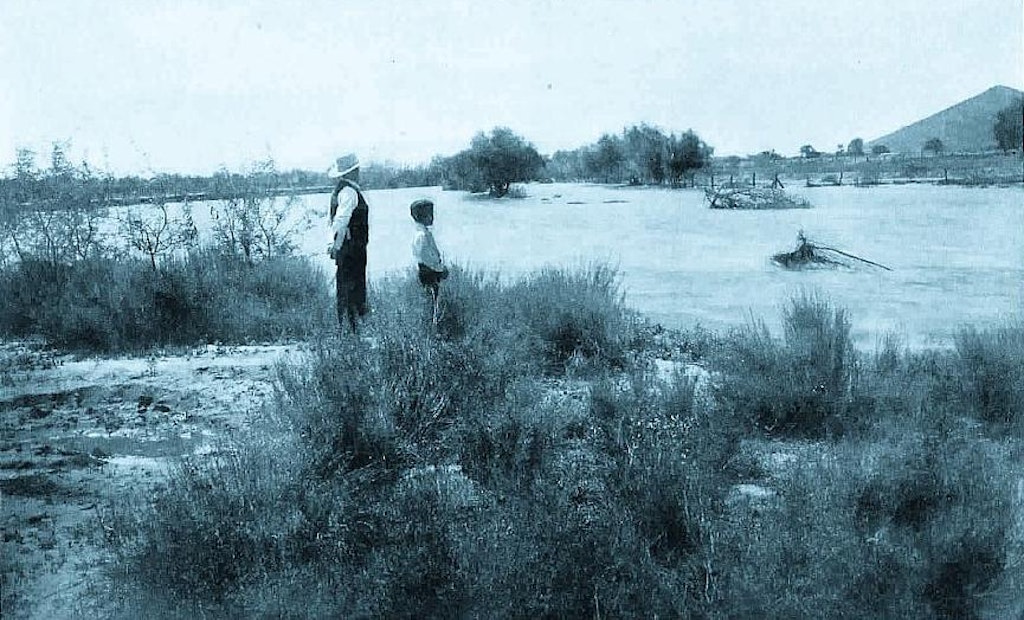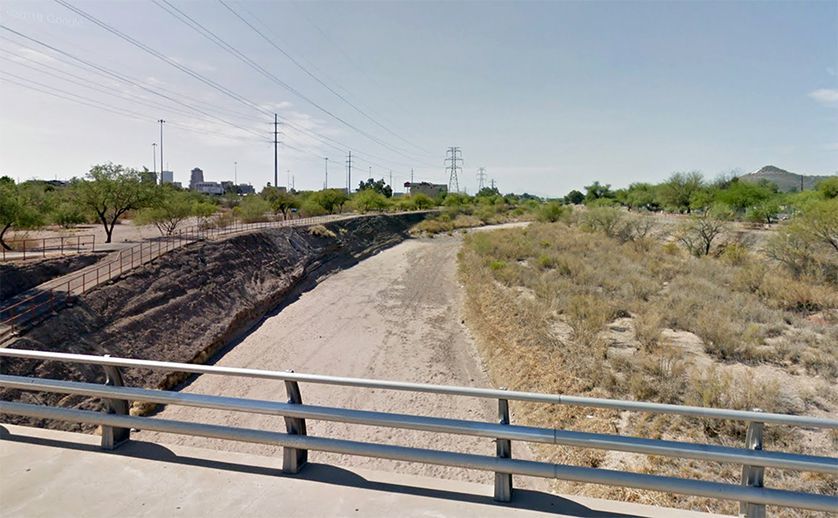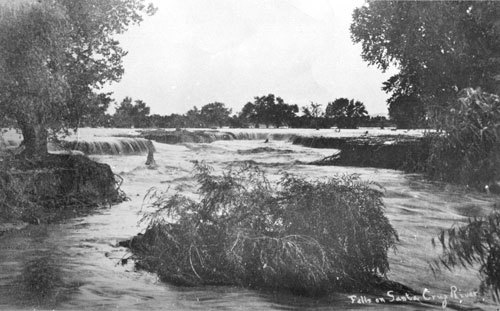Drought and decimated water bodies have become common in recent decades, but Tucson, Arizona, is fighting against the death of their once-great landmark — the Santa Cruz River.
At one time a striking visual feature and focal attraction for the expanding Tucson area, the river basin has been nothing more than a dusty flood channel since the mid 1900s, after nearly a century of overconsumption took its toll.
“The Santa Cruz River at one time was what attracted a lot of residents to Tucson,” says Maya Teyechea, recharge section hydrologist and manager of the Santa Cruz River Heritage Project. “It flowed year-round and then it decreased as groundwater pumping increased, and the population increased, and now it no longer flows year-round.”
When Tucson was founded in 1775, transplants were drawn by a beautiful flowing river with banks of native vegetation and plentiful wildlife that cultivated economic growth and development.
Spearheaded by Tucson Water, the Heritage Project seeks to capitalize on regional efforts to recharge the river basin, breathing new life into the historic downtown Tucson channel.
Using city wastewater treated by Pima County, reclaimed water will travel 9 miles from the plant to a discharge site on the river. A small dechlorination facility will be built as a final step before discharge, but the project is using existing infrastructure and an outlet structure that was originally built as a maintenance outflow for the city’s water treatment plant.
It’s not an untested concept, as another river restoration site already exists north of the city, run by Pima County.
“That area north of us has a very nice riparian area, a lot of people visit along the riverwalk there, and we would like to move some of that to the downtown area,” Teyechea says.
The permit they recently applied for is a maximum discharge of 3.5 mgd, out of a total city treatment capacity of 32 mgd.
“It’s not a huge amount of water. It’ll be a meandering stream, and it’s not going to be as much water as what’s being released up north right now,” Teyechea says. “We have future phases we’re looking at, basically extending the stream through the downtown area. We don’t know how far the water is going to flow because of infiltration rates, so we’re going to wait to see how far the water actually flows.”
Widespread support, both among the public and local government, has helped spur the project forward. City council members and the mayor of Tucson have been involved from the planning stages.
“For decades there has been talk about putting water in the river. This project has received a lot of support because of the potential for downtown economic development opportunities,” Teyechea says. “For these reasons, we have gained a lot of public and local government support.
“It’s really to recharge the aquifer, and it’s another option for us to put recharge effluent water into the aquifer, however, we are looking at it as an opportunity for downtown development as well,” she says.
Many benefits
Another impetus for the project is that much of their current effluent recharge ends up outside of city limits.
“That’s where we lose rights to our water credits, so when we put it into the river, it’s going to stay in the Tucson aquifer,” Teyechea says.
As a drought-prone area, water conservation and resource planning are important. Along with 57 potable storage facilities providing about 305 million gallons of capacity, Tucson draws from over 200 wells, and has a program to recharge its aquifer using water from the Colorado River. The city has spent around $1 billion on water recycling and accompanying infrastructure.
Through that recharge program, the city gets 100 percent water credit, meaning they can take out as much as they put in. With the river discharge, they will only get 50 percent credit on the water put in, though Teyechea hopes that will improve as the project expands.
Recharge to the river basin will require a new set of permits in addition to the current recharge program.
“We’ll have monitoring requirements, to monitor the groundwater, and we’ll do maintenance on the river,” Teyechea says. “We have a vegetation expert that’s going to be doing a study on the river, and we’re going to be talking about what kind of riparian area it will be or could be in the future.”
They are hoping to have all the permitting and processes in place to begin discharging into the riverbed by Memorial Day 2019. Though they aren’t sure how far the current permit amount will take them, they do expect to see an immediate effect.
“We’re not really sure if we’re going to do planting or seeding, but we do expect to see natural growth. It could take a little time, but just having water in the river itself, it’s right along the riverwalk, so you can look right down into the river,” Teyechea says. “I think there is going to be an immediate visual confirmation of a change.”








